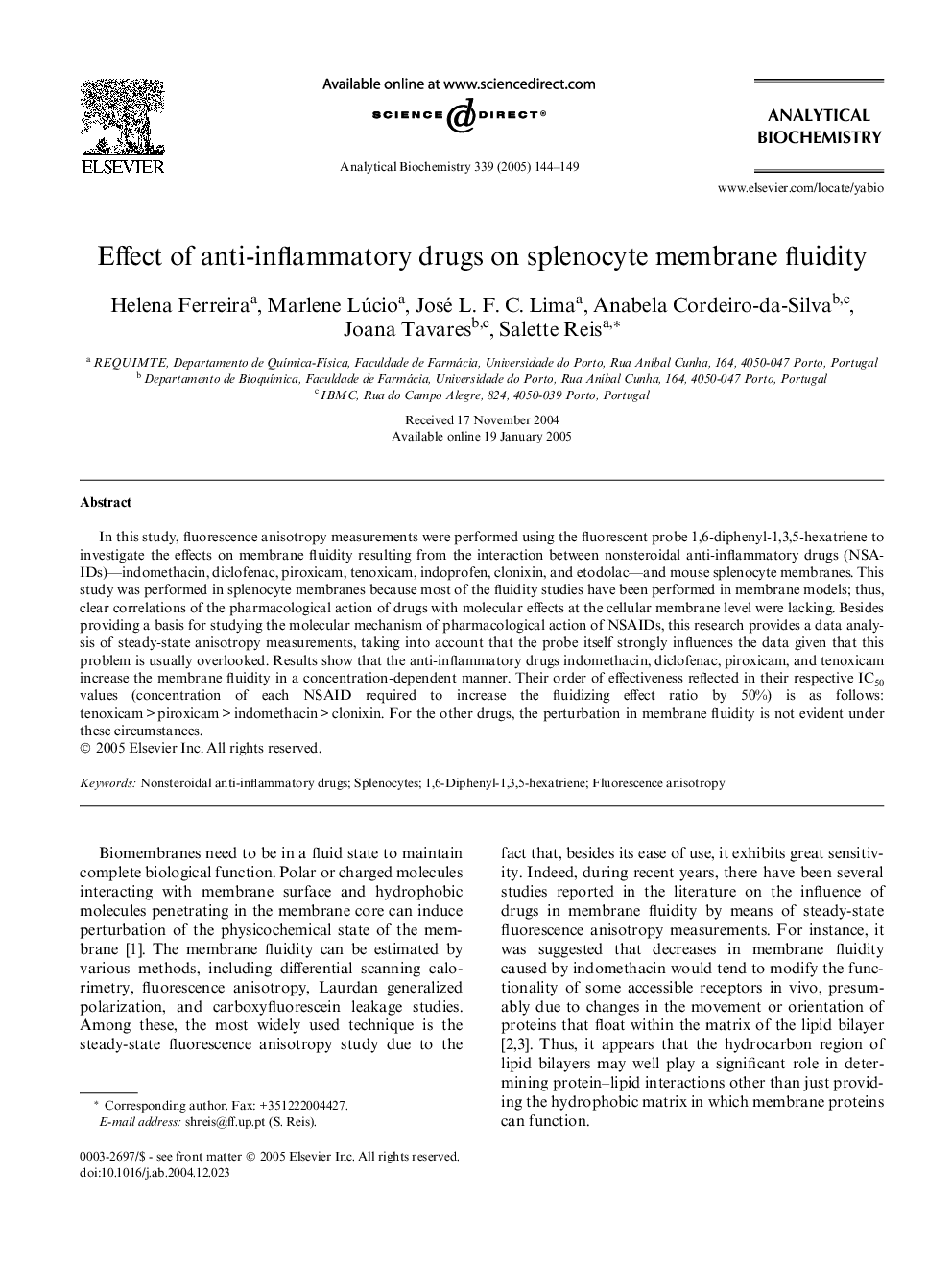| Article ID | Journal | Published Year | Pages | File Type |
|---|---|---|---|---|
| 10536310 | Analytical Biochemistry | 2005 | 6 Pages |
Abstract
In this study, fluorescence anisotropy measurements were performed using the fluorescent probe 1,6-diphenyl-1,3,5-hexatriene to investigate the effects on membrane fluidity resulting from the interaction between nonsteroidal anti-inflammatory drugs (NSAIDs)-indomethacin, diclofenac, piroxicam, tenoxicam, indoprofen, clonixin, and etodolac-and mouse splenocyte membranes. This study was performed in splenocyte membranes because most of the fluidity studies have been performed in membrane models; thus, clear correlations of the pharmacological action of drugs with molecular effects at the cellular membrane level were lacking. Besides providing a basis for studying the molecular mechanism of pharmacological action of NSAIDs, this research provides a data analysis of steady-state anisotropy measurements, taking into account that the probe itself strongly influences the data given that this problem is usually overlooked. Results show that the anti-inflammatory drugs indomethacin, diclofenac, piroxicam, and tenoxicam increase the membrane fluidity in a concentration-dependent manner. Their order of effectiveness reflected in their respective IC50 values (concentration of each NSAID required to increase the fluidizing effect ratio by 50%) is as follows: tenoxicam > piroxicam > indomethacin > clonixin. For the other drugs, the perturbation in membrane fluidity is not evident under these circumstances.
Keywords
Related Topics
Physical Sciences and Engineering
Chemistry
Analytical Chemistry
Authors
Helena Ferreira, Marlene Lúcio, José L. F. C. Lima, Anabela Cordeiro-da-Silva, Joana Tavares, Salette Reis,
